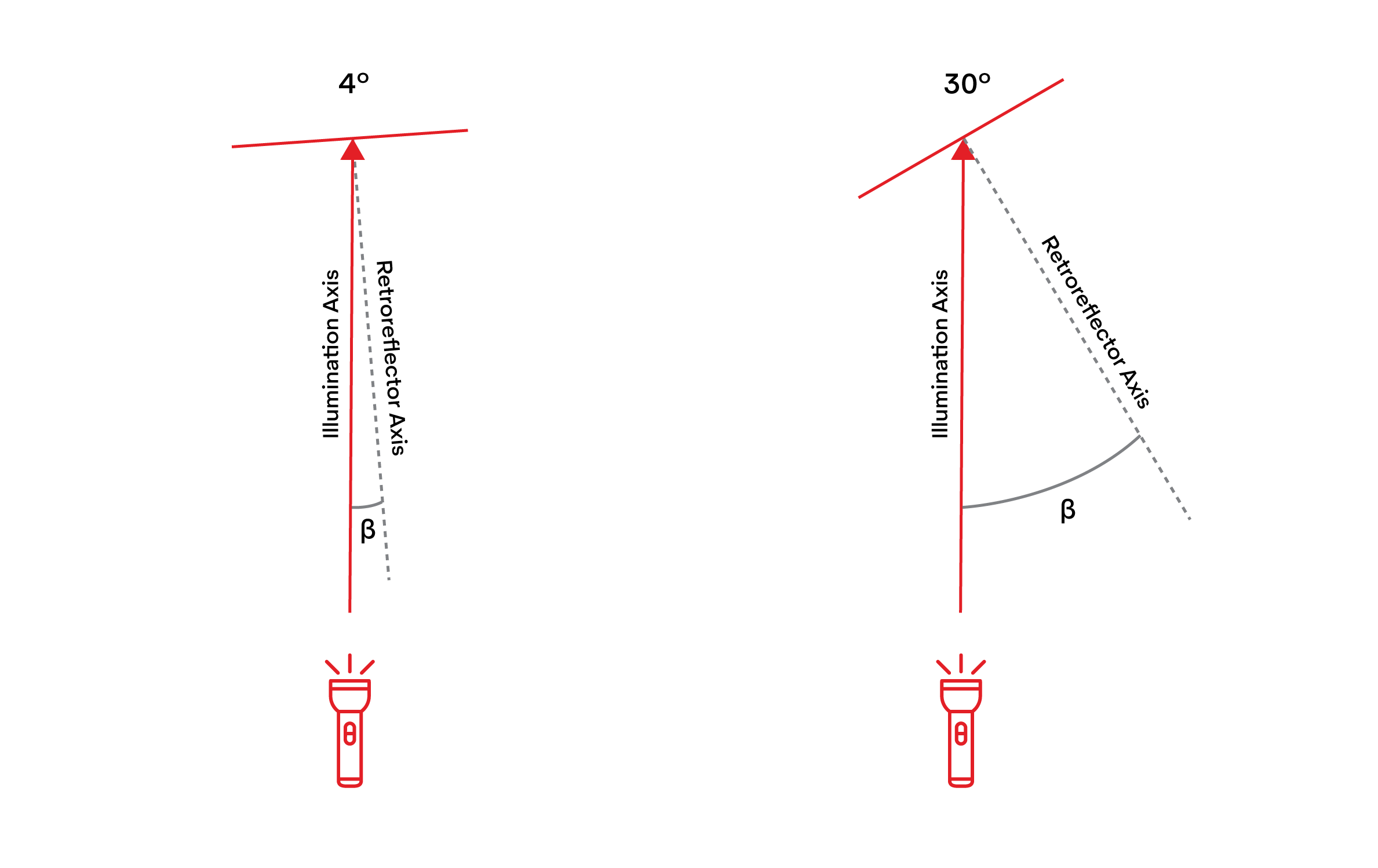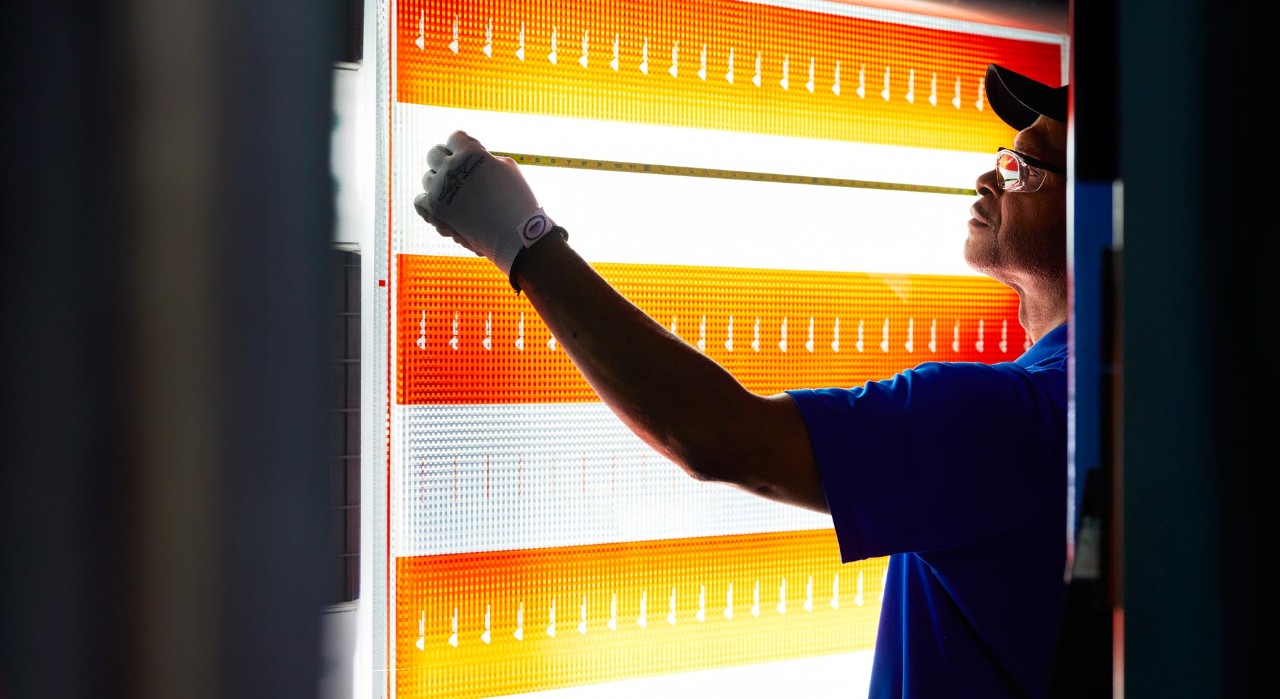Rotation Angle
It would be easier to explain how rotation angle changes than to define it. Rotation angle (ε) can be decreased or increased by rotating the sample clockwise or counter-clockwise, or by rotating the receiver around the light source. Rotation angle can range from 0° to 360°, starting at the 12 o’clock position and rotating clockwise. While observation angle dictates how far from the center of the cone of retroreflectivity our receiver should be, rotation angle dictates its rotation.

It should be noted that in the lab (ignoring portable equipment), the light source almost always has a fixed position while the receiver moves up and down to control the observation angle, and the sample is tilted from side to side or up and down to change the entrance angle. Because the light source and receiver are fixed on the same vertical plane (up and down with respect to each other), the rotation angle is controlled by rotating the sample. Ultimately, what we are trying to control is the relative position of the retroreflective elements to our light source and receiver.






